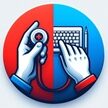In the process of transitioning from physiotherapy to IT, I’ve embarked on setting up lab environments to hone my skills. Here’s a snapshot of my experience creating a CTF (Capture The Flag) lab environment:
Setting Up for CTF Scenario: I delved into the world of CTFs by meticulously crafting my lab environment:
Leveraging WSL2: I harnessed the power of Windows Subsystem for Linux (WSL2) on my Windows machine to execute Linux commands seamlessly through Visual Studio Code. This innovation eliminates the need for virtualization, ensuring a lighter and swifter experience.
Installations and Configurations: I configured WSL2 to host both Kali and Debian Linux distributions, creating a dynamic environment for CTF challenges.
CTF Journey with picoCTF: I embarked on a captivating journey with picoCTF challenges, utilizing my lab environment to the fullest:
- Toolchain Setup: I ensured my environment was ready by installing essential updates, securing the wget application, and setting up Python3 and necessary pip packages.
- Solving Challenges: Armed with my lab environment, I navigated through picoCTF challenges. I employed various techniques, like employing wget to fetch files, and elegantly solved challenges within Visual Studio Code.
- Noteworthy Achievement: Among these achievements was successfully decrypting the ROT13 challenge. I designed a script that input the encrypted message and cleverly shifted each character by 13 places in the ASCII code, unraveling the mystery.
Key Takeaway: This journey underscored the importance of adaptable lab environments for hands-on learning. Each challenge in this transition reinforces my growth and aptitude for IT, showcasing the power of determination and creativity.
From nurturing my background as a physiotherapist to venturing into IT, every lab setup embodies a step forward, a testament to the boundless potential within the realm of technology.
